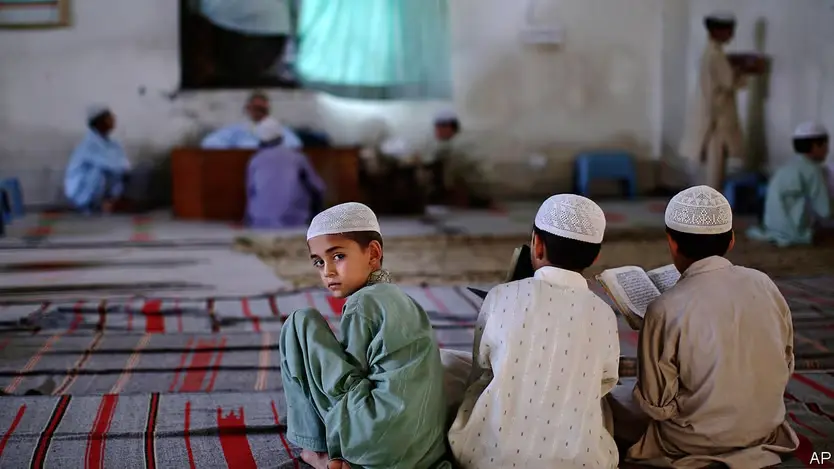Oceans cover more than 70 percent of the planet’s surface and have shaped the patterns of human civilization. Beside being a crucial part of the planetary ecosystem, oceans are a source of livelihood and economic progression. According to the Organization for Economic Co-operation & Development (OECD), the value of the global ocean economy is about 1.5 trillion USD per year, projected to double by 2030. This is significant news for Pakistan where aquaculture remains underdeveloped, yet holds great potential to address food security and boost economic growth.
It is important to know that more than 600 million people (around 9.5 percent of the world’s population) live in coastal areas and approximately 2.4 billion people (about 40 percent of world’s population) live within 100 km of the coast. Oceans are a crucial source of economic livelihood and support around 31 million jobs globally.
Fish is a staple food resource, and a primary medium of livelihood for coastal communities and island nations. The fishery sector contributes around 17 percent of the total animal protein consumed by humans and supports approximately 12 percent of human livelihoods. With a global value of 113.2 billion USD, the fish industry encompasses both open-sea fishing and fish farming. The global seafood market is expected to reach 138.7 billion USD by 2027. However, the overexploitation of fish stocks has placed numerous species on the brink of extinction.
The United Nations’ Sustainable Development Goal 14 (SDG-14) focuses on preserving life below water. Contemporary approaches such as aquaculture, involving the controlled farming of fish, can safeguard fish stocks and the marine environment, thereby reducing reliance on wild fish stocks. While fishing is a traditional practice and an established industry, aquaculture in Pakistan—particularly mariculture—is still an emerging sector.
Aquaculture in Pakistan: Untapped Potential for Sustainable Growth
Pakistan has a coastline stretching over 1000 km. The marine-resource-rich maritime zones of Pakistan extend from shores to 350 nautical miles (NMs) seawards with a total area of 290,000 sq.-km. The fishing industry of Pakistan has long thrived using these resources for food security and generating economic revenue as well. However, increasing population has led to overexploitation of marine resources.
Pakistan has a coastline stretching over 1,000 km. The marine-resource-rich maritime zones of Pakistan extend from the shores to 350 nautical miles (NMs) seawards, covering a total area of 290,000 sq. km. The fishing industry of Pakistan has long thrived by utilizing these resources for food production and generating economic revenue. However, increasing population growth has led to the overexploitation of marine resources.
Moreover, growing marine pollution, Illegal, Unreported and Unregulated Fishing (IUUF), and the use of banned fishing equipment, is also threatening the stability of marine life cycle in Pakistan’s territorial waters. On one axis, it is threatening the food security of Pakistan while on other hand it undermines the economic prospects of the fishery industry. This necessitates the adaptation and popularization of new measures to fulfill the growing food requirements while sustaining marine resources. In this regard, aquaculture in Pakistan offers credible solutions to problems related to food security, marine sustainability, and economic growth.
Current Status of Aquaculture in Pakistan
In Pakistan, the fish industry is valued at 1.2 Billion USD and has created almost 1.8 million jobs. Pakistan’s aquaculture production has increased manifold from 12,485 tons in 2000 to 164,527 tons in 2021. Freshwater aquaculture produced almost the entire amount, while marine aquaculture or mariculture contributed only a small portion. Global aquaculture accounted for 46 percent of total fish production in 2018. It has experienced a yearly growth rate of 7.5 percent since 1970. However, in Pakistan, aquaculture makes up only 15 percent of fish production, with minimal contributions from marine fish. In contrast, India exported seafood worth 8.09 billion USD in 2022-23. The majority of this came from aquaculture products.
While Pakistan has shown an upward production trend, it must address key challenges to ensure the sustainable growth of aquaculture in Pakistan, especially with the rising demand for fish.
Also See: Climate Change: A New Warfront
Challenges in Developing Aquaculture in Pakistan
Few key challenges which Pakistan is currently facing regarding development of its aquaculture industry can be underscored.
- First and foremost, there is a lack of awareness and community support, as the existing Ghato system restricts genuine fishermen from participating in educational or training activities without the permission of landlords or superiors.
- Secondly, Pakistan faces issues related to hatchery availability and the lack of local production of quality feed for aquaculture, resulting in higher costs and increased reliance on imports.
- Thirdly, there is a lack of a comprehensive legal framework and national policy for facilitation of aquaculture, both at the federal and provincial levels.
- And lastly, the country needs to adopt modern aquaculture technologies and provide effective training to improve productivity, as neighboring countries like Bangladesh, India, and Iran have embraced advanced techniques.
Potential Regions for Aquaculture in Pakistan
Pakistan coastline is broadly divided into coasts of Sindh and Balochistan. Balochistan coast carries good economic potential. But it’s comparatively less productive than the Sindh coast which contains the Indus Delta. However, the seawater along Makran coast in Balochistan is clearer in contrast with Karachi coast which is polluted with high concentration of industrial waste. Thus, Makran coast offers suitable areas for mariculture or brackish water culture.
It is pertinent to mention that fishing on the coastal belt is a prime source of income and the coastal rural economy is largely dependent on it. Sindh coast, Thatta, Badin, Sajawal is feasible for aquaculture (especially mariculture). Balochistan also possesses immense opportunities for aquaculture along its huge coastline. Barramundi, cobia, white leg shrimp, lobster, marine trout and oysters are few feasible species for aquaculture. In addition, areas like Hingole district (Lasbella), Kund Malir, Kalmat district, Jiwani, Pishukan district, Ganz district and Damb are potential sites for aquaculture.
Government Initiatives and Future Directions
The Government of Pakistan is actively promoting and regulating aquaculture to enhance economic benefits and food security. The government needs to take additional measures, such as finalizing and implementing a national aquaculture policy, establishing a dedicated department, transitioning to modern aquaculture models, investing in aqua and mariculture infrastructure, and promoting community-based aquaculture initiatives.
Capacity building, technology adoption, and strict regulations for processing plants are essential. These efforts must occur alongside synchronized actions between the government and the private sector. Raising public awareness through media is also crucial. Additionally, declaring Marine Protected Areas and improving data gathering are important steps. Regulating the traditional fishing industry will help achieve better output and reduce environmental impact. These measures will increase net revenue generation from aquaculture, safeguard marine ecosystems, and ensure economic progression.
To ensure Pakistan taps into the immense potential of its coastline and marine resources, the country must embrace aquaculture. This approach is not just an option—it’s a necessity. With the right investments in technology, training, and policy, aquaculture in Pakistan can become a game-changer for food security, economic growth, and marine sustainability. Now is the time to embrace a future where innovation meets tradition. Pakistan must use its waters wisely to ensure prosperity for generations to come.
The views expressed in this article are the author’s own. They do not necessarily reflect the editorial policy of the South Asia Times.







